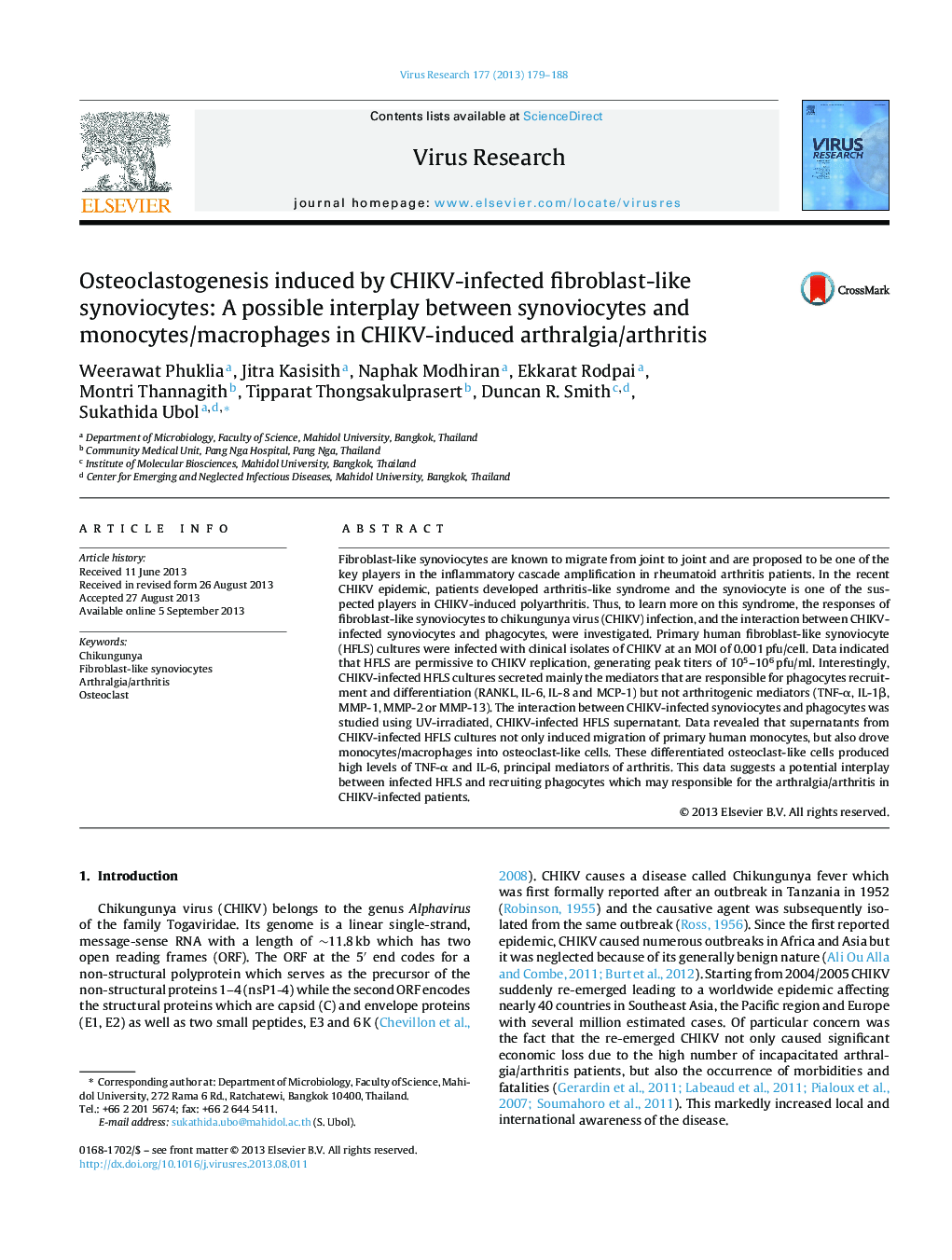| Article ID | Journal | Published Year | Pages | File Type |
|---|---|---|---|---|
| 6142788 | Virus Research | 2013 | 10 Pages |
â¢Human fibroblast-like synoviocytes subceptible and replicate high level of CHIKV.â¢CHIKV-infected synoviocytes produced high level of chemoattractants but not MMP family.â¢Our finding suggests that the major role of CHIKV-infected synviocytes is to generate synovium environment that favor osteoclastogenesis.â¢Our finding suggests that CHIKV-induced osteoclast might be the population that responsible for arthralgia/arthritis in CHIKV-infected symnovium.
Fibroblast-like synoviocytes are known to migrate from joint to joint and are proposed to be one of the key players in the inflammatory cascade amplification in rheumatoid arthritis patients. In the recent CHIKV epidemic, patients developed arthritis-like syndrome and the synoviocyte is one of the suspected players in CHIKV-induced polyarthritis. Thus, to learn more on this syndrome, the responses of fibroblast-like synoviocytes to chikungunya virus (CHIKV) infection, and the interaction between CHIKV-infected synoviocytes and phagocytes, were investigated. Primary human fibroblast-like synoviocyte (HFLS) cultures were infected with clinical isolates of CHIKV at an MOI of 0.001 pfu/cell. Data indicated that HFLS are permissive to CHIKV replication, generating peak titers of 105-106 pfu/ml. Interestingly, CHIKV-infected HFLS cultures secreted mainly the mediators that are responsible for phagocytes recruitment and differentiation (RANKL, IL-6, IL-8 and MCP-1) but not arthritogenic mediators (TNF-α, IL-1β, MMP-1, MMP-2 or MMP-13). The interaction between CHIKV-infected synoviocytes and phagocytes was studied using UV-irradiated, CHIKV-infected HFLS supernatant. Data revealed that supernatants from CHIKV-infected HFLS cultures not only induced migration of primary human monocytes, but also drove monocytes/macrophages into osteoclast-like cells. These differentiated osteoclast-like cells produced high levels of TNF-α and IL-6, principal mediators of arthritis. This data suggests a potential interplay between infected HFLS and recruiting phagocytes which may responsible for the arthralgia/arthritis in CHIKV-infected patients.
